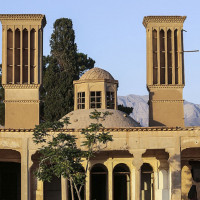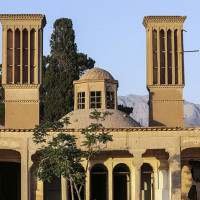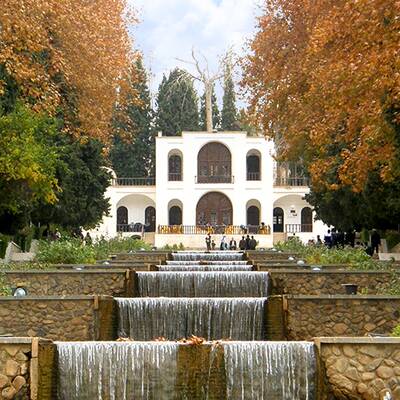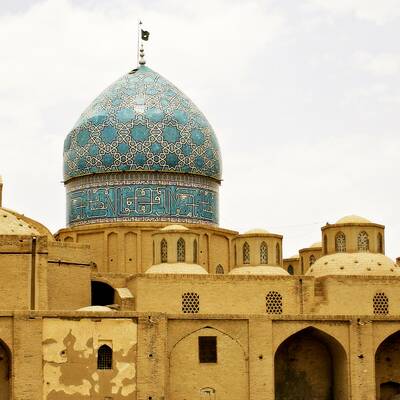
Shotorgalu Mansion
The masterful Iranian architects have always been inspired by nature and its rules in their creations. Shotorgalu, literally meaning the throat of camel, is a water canal that looks like the throat of a camel. It transfers water following the hydraulic rules. By creating this structure, not only the water can be transferred from beneath the building, but also no animal can enter the water.
Shotor Galu Mansion is built in the foothills of the Jupar Mountains and the path of Vakilabad Qanat. It is considered as one of the popular attractions of the city of Mahan. This mansion is reminiscent of the Qajar dynasty and was the house of the Razavi Nematollahi family. It was built in two parts of the alcove and Andaruni or the private chambers.
The Shahneshin or the alcove has two windcatchers and a Kollah Farangi. In the middle of the building, there is a Hozekhaneh in an octagonal room, with a high dome-like ceiling. Close to the Hozekhaneh are some corridors and rooms that are decorated with stucco works. These intersecting rooms have beautiful wooden doors with lattice windows and colorful glasses. There are columns with capitals located next to the entrance of the corridors. They have been decorated with stucco works. The floor of the rooms has been covered with stones.
There are two windcatchers on two sides of the Hozekhaneh that guide the flow of the wind into it. The winds interact with the water of the pool and create a cool and pleasant space during the warm season. These windcatchers are one of the creative innovations by the Iranian architectures to confront the burning hot temperatures of the desert in summer.
The ceiling of the Hozekhaneh has been decorated with muqarnas and there is a Kollahfarangi, in the form of an octagonal with eight windows on it. Pieces of clay bricks have been used to cover the roof. These bricks have been arranged in a way that they prevent the water rain to enter inside the building.
Shotor Galu Mansion has had many yards in the past. The northern yard was Anarestan or garden of pomegranates, and the southern was Narenjestan or the garden of sour orange. With the flow of the air and green trees, these gardens presented the vision of the Persian gardens. Water always flowed inside the garden and gifted peace and freshness to the trees and the members of the family, as well. This important tourist site of Mahan is located in front of the Shah Nematollah Vali Shrine.



